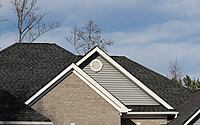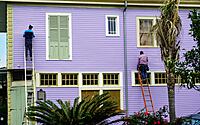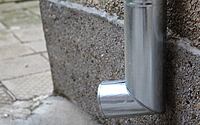What to Do When You Have Leaking Gutters
Damaged and leaking gutters are some of the biggest causes of moisture seeping through your critical structures. Moisture promotes the growth of mold and mildew and can trigger respiratory problems. It weakens the foundation of your home, hence compromising your safety. If you identify leaking gutters in your home, you must act promptly. Here are a few of the most critical steps to take.
1. Look for the Signs
Ensure that leaking gutters are your real problem before proceeding. The main ways to identify leaking gutters include:
– Checking your gutter for cracks and other signs of damage
– Looking out for downspouts and clogged gutters
– Peeling paint under your gutters could be an indication of leaks
A clog could easily be mistaken for a leak. It would help if you were sure of what you are dealing
with before proceeding.
2. Identify the Cause of the Leak
Like with any other problem, you need to understand the cause before administering a solution. Usually, gutter leaks may result from clogs, cracks or holes, separated seams or joints, or loose fasteners. Knowing how to fix leaking gutters is only possible when you understand the cause of the problem.
3. Resolve the Problem
Once you have identified the cause of the problem, address it directly and clean the area. Allow the gutter, especially the seams and the damaged areas, to dry out completely. Consider using a brush to get rid of any substances that could affect your sealants.
Apply a silicone-rubber caulking substance around the seams and ensure generous amounts both inside and outside to prevent future leaks. If there are any little holes on the gutter, use roofing cement to close them up. A putty knife should help you spread out the cement evenly. Metal patches may be more appropriate for larger holes.
Tighten your gutters if they are loose. Over time, rain gutters start pulling away from your roof. Before you know it, water will be dripping over the sides of the gutters. This is usually because the fasteners loosen or rust after years of exposure to temperature changes and water. Sometimes, the sag is so obvious that you can identify it just by looking.
4. Keep the Gutters In Good Shape
Once you have fixed the issue, it is time to ensure that the gutters stay in good shape for a long time. Here are a few helpful tips:
– Clean the gutters every fall and spring and remove all grunge and fallen leaves
– Install mesh or leaf guards over the gutters
– Inspect the gutters regularly for missing or loose screws, holes, and cracks. Fix the problem before the gutters start leaking
– If you have heavy loads of fallen trees, keep them from your roof.
– When you clean the rain gutters, always check for downspouts.
5. Get an Apron
Rainwater can find its way between the walls and gutters even when the gutters are well-secured. You may notice puddles at the base of the walls or water flowing down the walls. You can fix the issues with drip edges or gutter aprons. They help eliminate gaps between the walls and gutter.
If you have leaking gutters, you must fix them as soon as possible. Allowing the issue to persist could lead to other problems. Leakages can weaken your house structures and promote the growth of mold. If you have trouble resolving the problem, seek professional help.
- by Matt Watts





